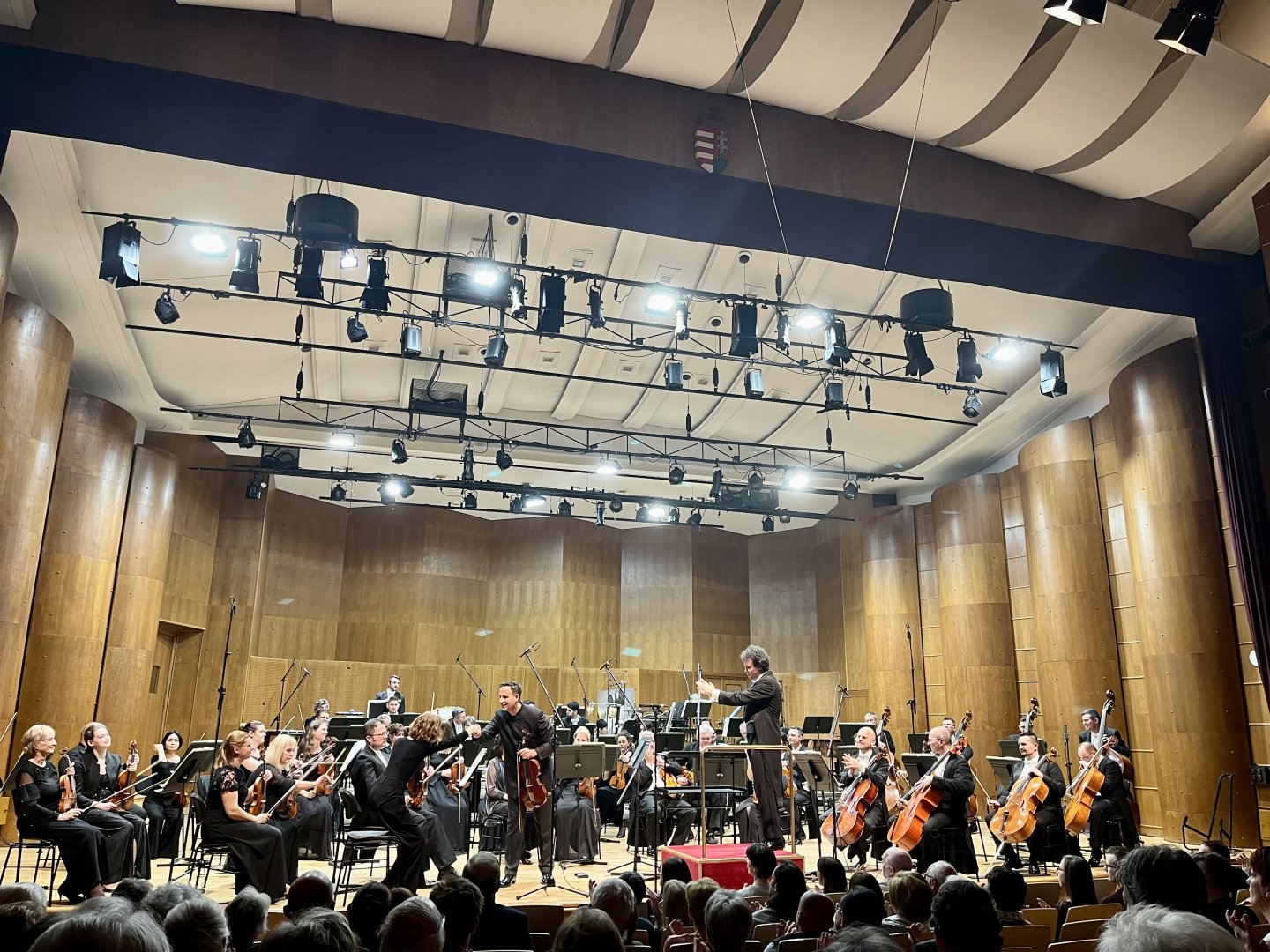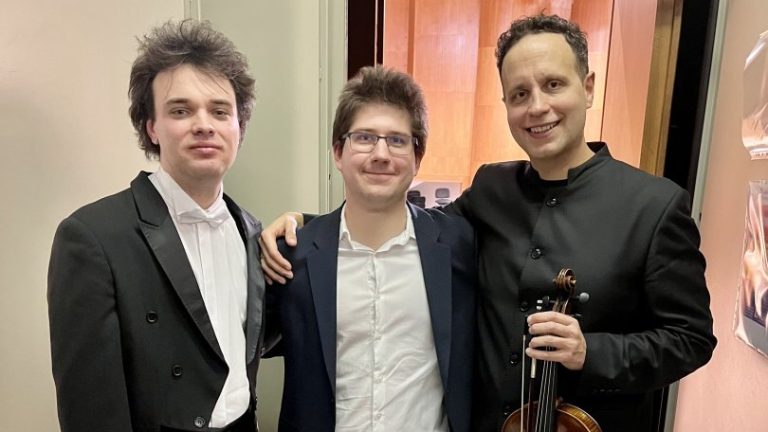The Győr Philharmonic Orchestra, led by maestro Martin Rajna, gave a stunning concert on March 19th entitled “Dialogues.” Included were a recent score by Péter Eötvös, a brand-new score by Balázs Kecskés D., and Mozart’s “Prague Symphony,” all performed in Győr’s János Richter Terem. Considering this was a regional orchestra in a modest city with a modest concert hall that could use some acoustical help, the results were nevertheless astounding on several levels.
Firstly, hearing Eötvös’ 13-minute “Dialog mit Mozart,” based on nine musical fragments that he extracted from 63 Mozart scores, revealed a sprightly entertainment that I’m sure Wolfie himself would have enjoyed. Written initially for the Salzburg Mozarteum Dialog Festival in 2014, the score was full of pranks, surprises, jazzy bass lines, and tomfoolery with dominant seventh chords – a sort of “earthling meets alien ” experience. Eötvös see-sawed between classical mantras and free-association, a clever restructuring of the elements combined with wild demands of the instruments and gorgeous chordal clusters at the ends of sentences. The timpanist got the last word, which set us up for the ensuing “Prague.”
Violist Máté Szűcs was the perfect soloist for the premiere of Kecskés’ Viola Concerto. His viola’s tone is one of the most beautiful I’ve heard, and his sensitive execution of the fascinating score was expert. This new work, commissioned by the Győr Philharmonic and the Péter Eötvös Foundation for Contemporary Music in 2022/23, was composed in the standard three-part sonata-form in which his arpeggiated three-note theme was mirrored, stretched, and reversed throughout.
The concerto began with a lightning flourish with percussion and winds to ignite the oncoming adventure. Like Eötvös, Kecskés also used a fragmentary approach to much of the thematic material and orchestral statements that exploited sudden deep plunges, bathed us in ethereal harmonics on the high end, and artfully gave quarter-tones the spotlight as exquisitely engineered emotional devices.
After the second movement’s spooky bliss doubled by Szűcs’ beatific intensity, the third movement galloped off into a joyous troika complete with sleigh bells and marimbas, giving the soloist plenty of meaty collateral for an etude-like cadenza. [Szűcs’ viola was made in 2001 by French luthier Nicolas Gilis. The instrument’s strings have an unusual feature: a special wire-wrap on one end of the strings, that, according to Szűcs, will ‘sweeten’ the high register. His final sustained high note proved it.]

This concerto will most likely enjoy a lot of attention by violists around the world, as Rajna, in his opening speech said, “Unfortunately, viola concertos are missing from the solo repertoire – very few have written them — not even Mozart!”
Rajna is an exceptional young maestro. Watching him is a poetic, balletic, and evocative experience. Without distracting the listener from the music, he morphs into a mime as he injects unbridled energy into each phrase and each section of the orchestra. With his hands (he doesn’t use a baton) he caresses and coaxes the players to dive into the music’s emotional contours, transforming the little black dots on the page into completely spontaneous thoughts. His treatment of the “Prague” was to let the tympanist’s majestic drumbeats and the two bassoonists’ joyful duets shine all the way through. The whole symphony bubbled like a fresh frothy Czech beer straight from the tap. Noting his energy and podium charisma, I would go so far as to say he’s Hungary’s young Dudamel.











